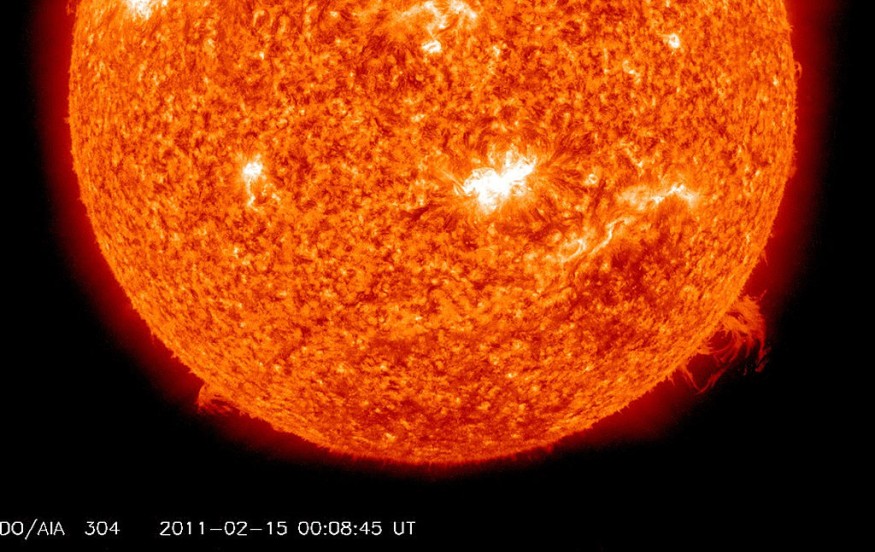NASA last week claimed that the Sun was "smiling" after a satellite captured what seemed to be a pattern of a happy face on the Sun.
NASA's Solar Dynamics Observatory was routinely studying the gigantic Sun. Still, today was especially noteworthy since the enormous, flaming star was seen grinning. On Thursday, October 17, NASA posted the adorable picture on its official Twitter account.

Coronal Holes
But since these black spots are thought to be coronal holes, as the adage goes, "don't let a smile fool you." According to NASA, these are areas where quick solar winds explode into space.
As a result, the Sun may not be too pleased with us as it emits solar flares at a speed of around 2 million miles per hour!
Two of the coronal holes in the image resemble dazzling eyes, and the third one inexplicably resembles an exuberant smile.
Pareidolia, a condition in which we wrongly think that items, including faces, are present in ostensibly random patterns, is what is happening here, claims ScienceAlert.
The Sun's face in this picture doesn't only seem to be cheerful, as numerous perceptive Twitter users have pointed out. They discovered that the Stay Puft marshmallow man, a renowned nemesis from the Ghostbusters legend, has a facial structure that is startlingly identical to the precise proportions of the Sun.
Activity on the solar surface has started to increase as the Sun steadily approaches its solar maximum. Astronomers have been closely monitoring the activities occurring on the Sun's surface when the solar poles flip as part of the Sun's 11-year cycle.
Geomagnetic Storm Explained
On Saturday, October 28, the National Oceanic and Atmospheric Administration (NOAA) issued a low-intensity, G1-class geomagnetic storm warning. Due to the Earth's location exactly in the path of these coronal holes, this is the case.
The least concerning probable effects of this poor space weather are G1-class geomagnetic storms. At the poles, they eventually boost the likelihood of auroras while typically only causing slight changes to electrical infrastructure.
NASA also released a report on a solar flare earlier this month. According to scientists, this particular solar flare is of the strongest class-X1-among all of the Sun's outbursts.
Flares and solar eruptions can affect radio communications, electrical power grids, and navigation signals and pose threats to spacecraft and personnel, according to the space agency.
The planet's beautiful auroras are thought to be formed in part by solar flares, particularly in the Arctic Circle and other northern regions where they are most regularly seen. However, one large flare might disrupt satellites or electrical networks since the Sun is the most potent star in our solar system.
RELATED ARTICLE : Solar Storm Warning: Flares Are Heading Towards the Earth, Could It Take Down Communications Lines Worldwide?
Check out more news and information on Space in Science Times.
© 2026 ScienceTimes.com All rights reserved. Do not reproduce without permission. The window to the world of Science Times.











